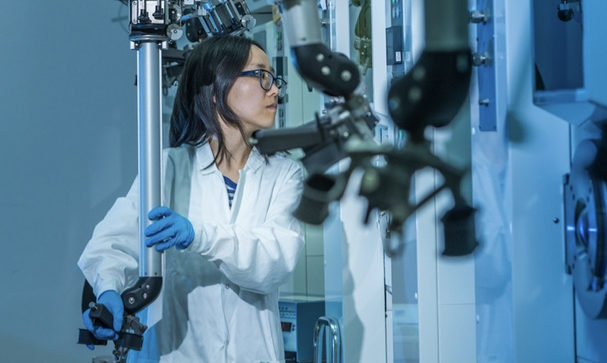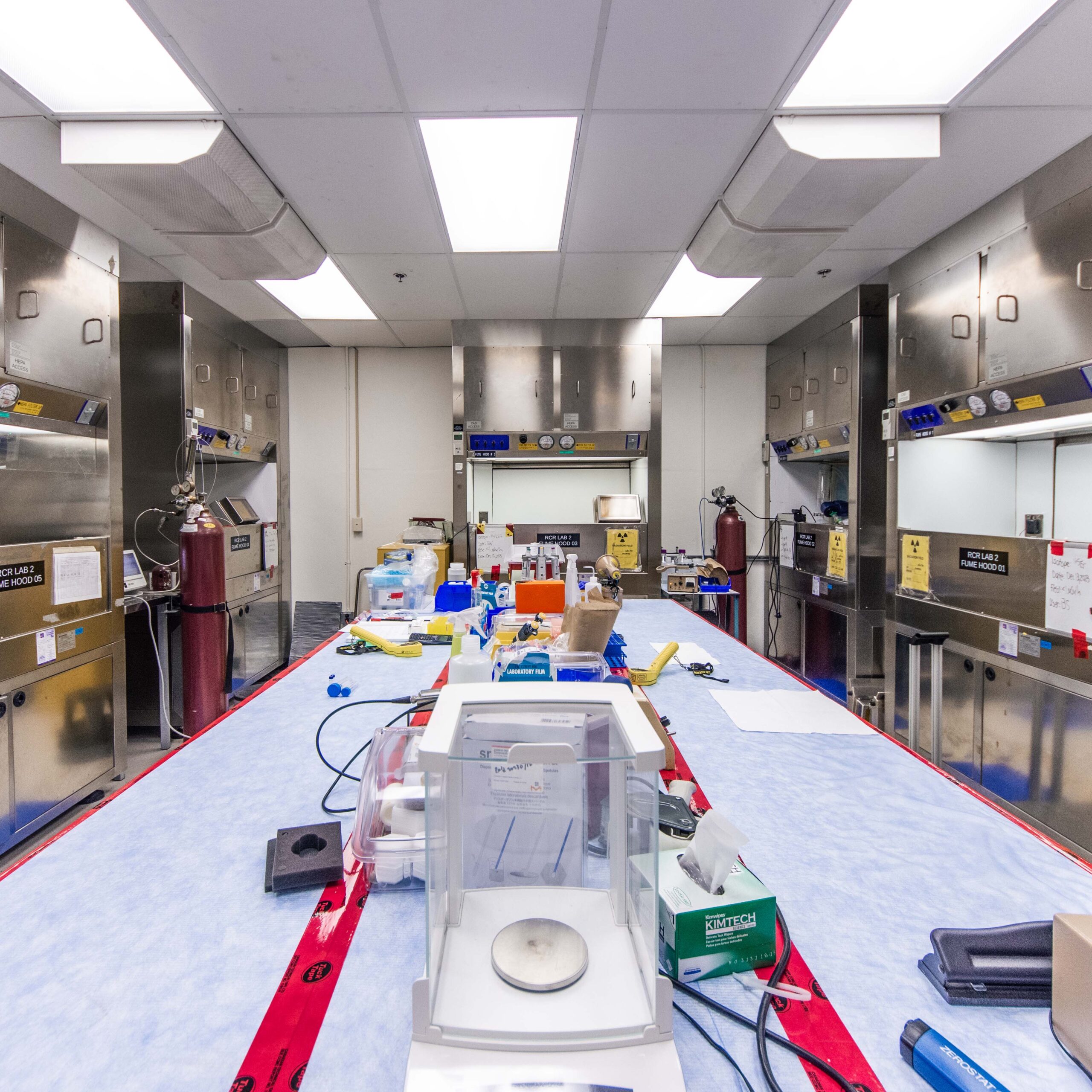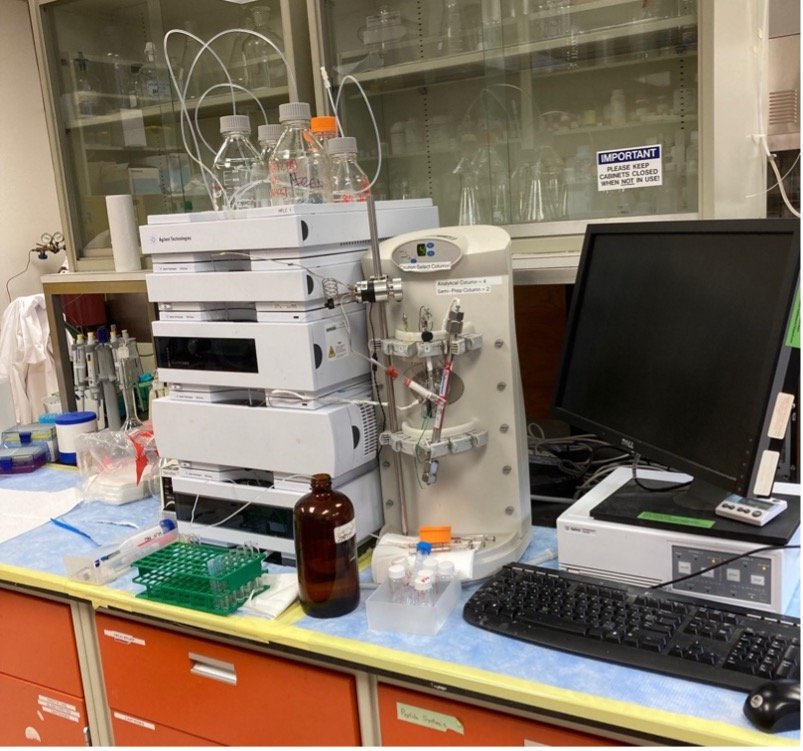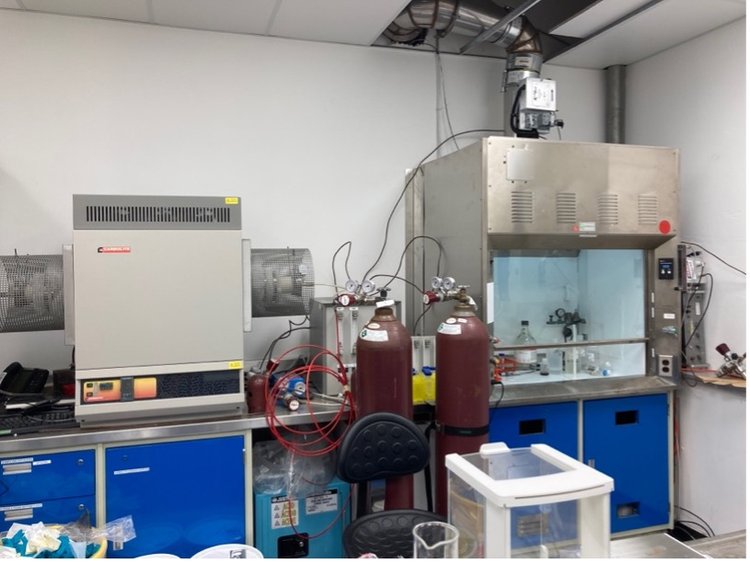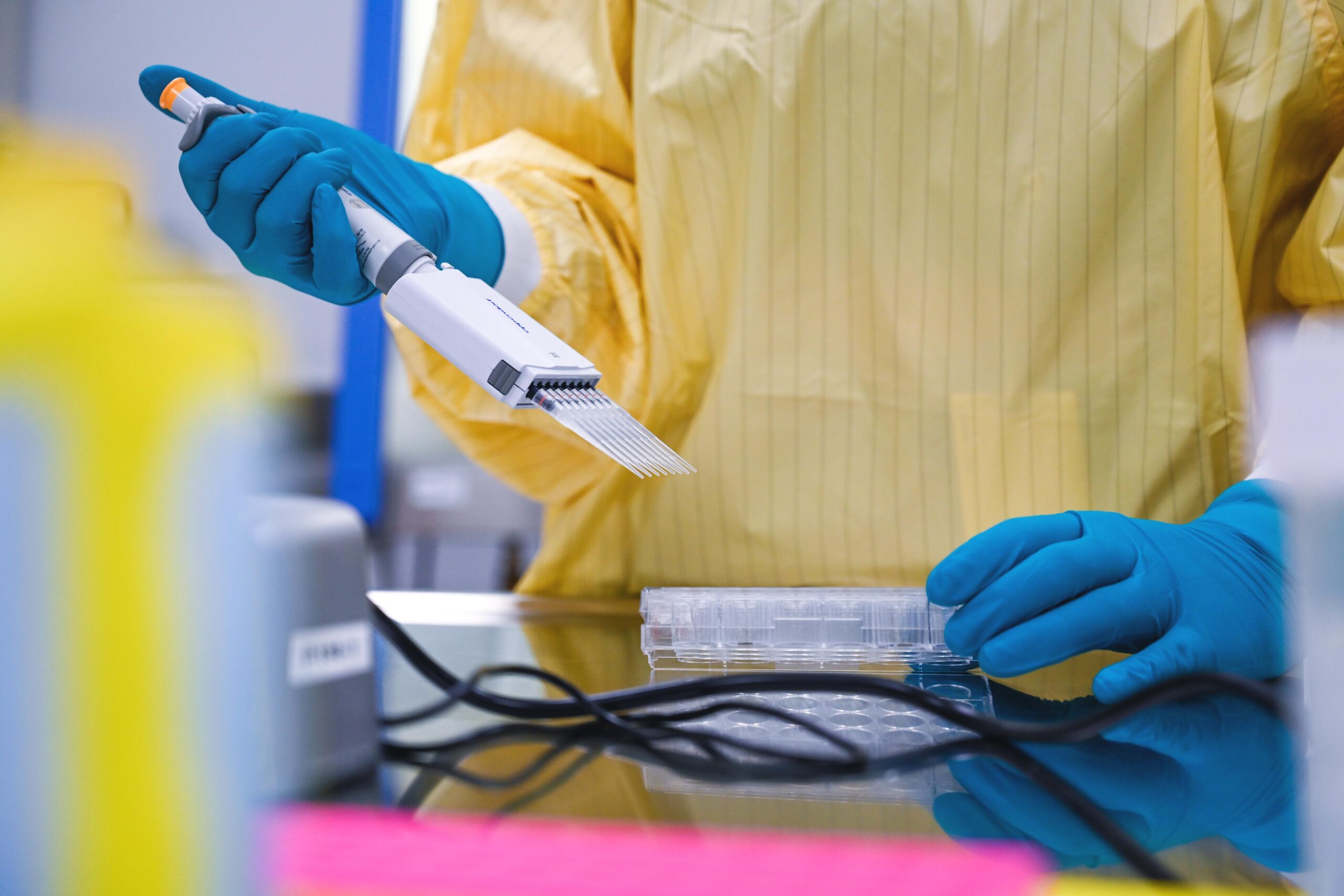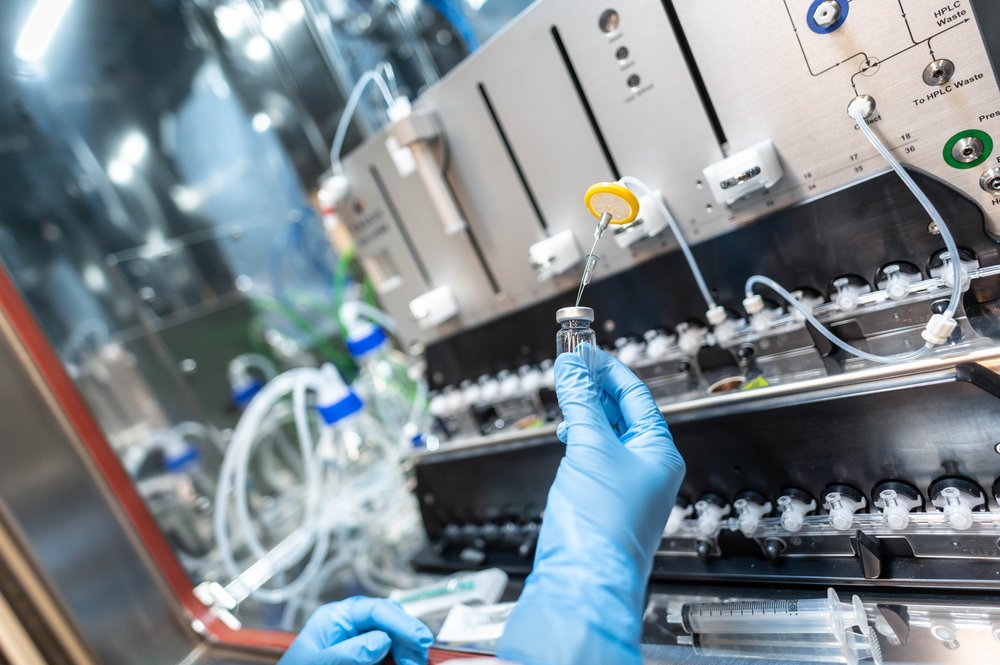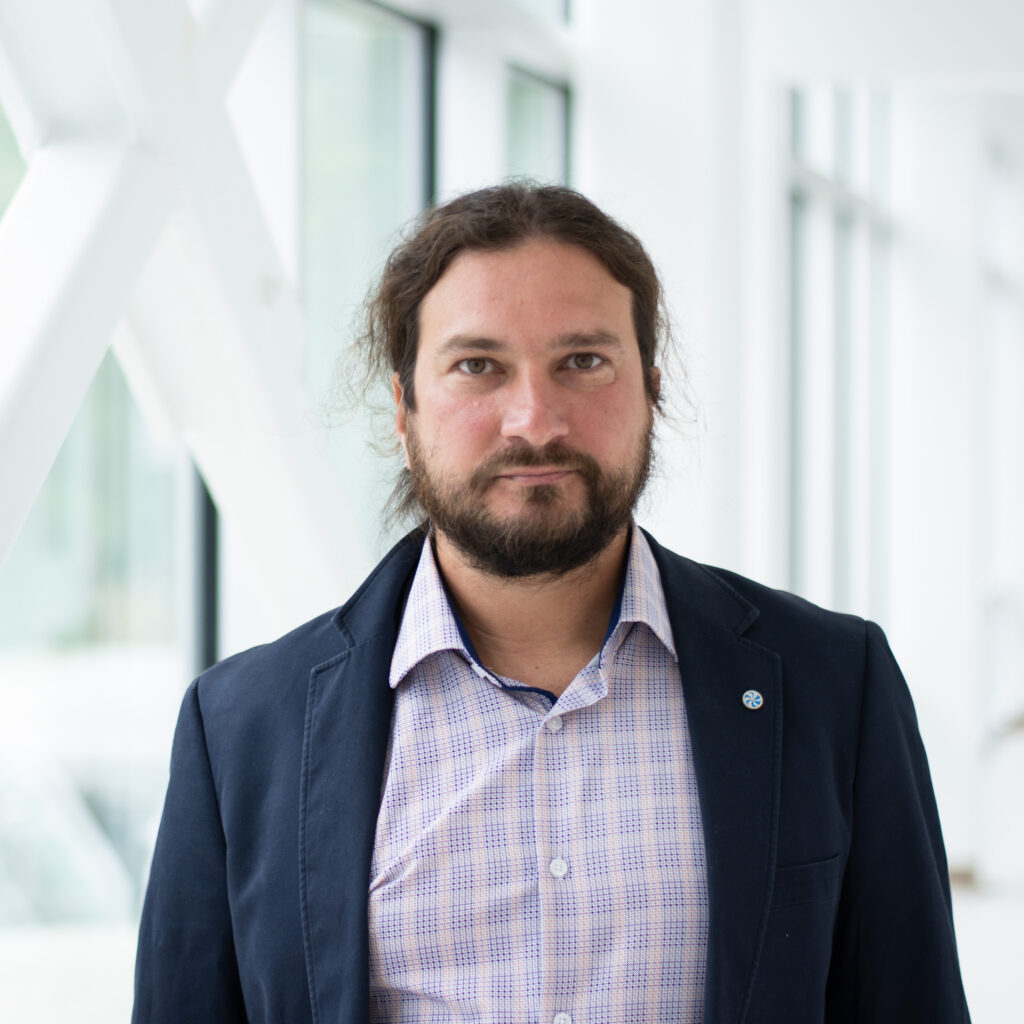
Life Sciences
The mission of TRIUMF’s Life Sciences program is to save lives every day through the production of radioisotopes and development of novel and more powerful radiochemical and radiopharmaceuticals. We produce and prepare certain commercially unavailable radioisotopes and radiopharmaceuticals for distribution to researchers, to design and synthesize radiopharmaceuticals with optimal properties for imaging of therapy of diseases and to develop novel tracer imaging systems. The program also includes projects making use of particle beams directly, such as FLASH therapy.
In addition to performing world-class research and making new discoveries, Life Sciences at TRIUMF builds on long-standing collaborations with the the Djavad Mowafaghian Centre for Brain Health and BC Cancer, for which we routinely provide various tracers for animal and pre-clinical studies.
To learn more, meet our team: Research Groups
Research feature
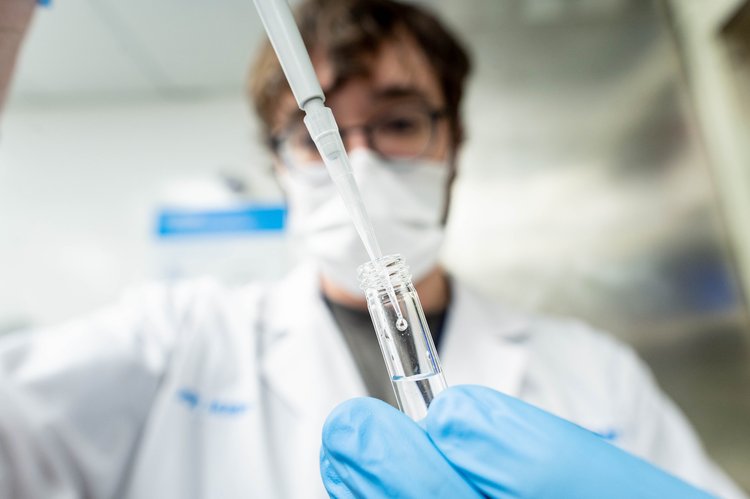
Rarest Drug
An incredibly rare isotope called actinium-225 could revolutionize the way we treat cancer. Preliminary trials have obliterated cancer in patients given only weeks to live. There’s only one problem: it’s almost impossible to obtain. A team of researchers in Vancouver is trying to change that.
TRIUMF are developing a new way to make actinium-225 using leftover particles from the accelerator. Learn more by watching The Rarest Drug.
Life Sciences Facilities
Radiochemistry Research Labs
The Radiochemistry Research Labs are where the radionuclides are extracted and purified from the irradiated target material (e.g., Ca, Ba, Ag) and reacted with either a peptide or an antibody conjugated to a chelator to make radiopharmaceuticals that can be used further for in vitro and in vivo studies. RCR-1 has four hot cells, which allows for high levels of radioactivity to be processed remotely with manipulators and automated synthesis modules while protecting the operator. Thorium targets that have been irradiated by the 500 MeV cyclotron, are dissolved and the Ac-225 is extracted through a number of chemical processing steps. Our labs also have some high-tech equipment, such as an ICP-MS and gamma spectrometer, which is used for radioactive elemental analysis. This helps the researcher determine radionuclidic and radiochemical purities.
RCR-2 has six lead shielded fume hoods that allow researchers to work with low levels of radioactivity to make radiopharmaceuticals, which are composed of a small molecule, peptide, or antibody conjugated to a chelator and then have an isotope (Zr-89, Tb-161, Ac-225 etc.) attached to it. These radiopharmaceuticals can be used for medical imaging (PET or SPECT Scan) to diagnose diseases such as cancer or to treat other diseases.
Wet Chemistry Laboratories
The synthesis of the various compounds (e.g., peptides and chelators) takes place in Lab 110 which has three fume hoods available for organic synthesis. There is a peptide synthesizer that facilitates the synthesis process by automation. There are also many pieces of equipment, such as an HPLC that assists in the purification of these compounds before they move to the Radiochemistry Labs.
Located on the ground floor of the Radiochemistry Annex is the GMP Quality Control Lab. Also known as Lab 103, it is home to a gas chromatograph, a radio-thin layer chromatography scanner, and quality control equipment used for the Life Sciences’ radiopharmaceutical production program. It also doubles as receiving, quarantine, and storage area for consumables used for radiopharmaceutical production.
Target Design and Manufacturing
Many different targets made from gold, calcium, barium, and other materials are designed and fabricated in the Target Design and Manufacturing lab. These targets are an essential component in the production of radionuclides by irradiation via the 500 MeV cyclotron (p,xn and spallation reactions) or the TR-13 (through p,n or p,2n reactions).
Radiobiology Lab
The Radiobiology Lab is our newest research space built for the purpose of expanding our work here at TRIUMF beyond the synthesis stage of radiopharmaceutical development. The lab is a fully functional tissue culture lab where novel radiopharmaceuticals (tracers) are evaluated from their initial design to receptor-binding assays. Further preclinical evaluation is done in collaboration with institutions such as BC Cancer and the Centre for Comparative Medicine.
GMP Capable Radiopharmaceutical Production
Positron Emission Tomography (PET) is a functional nuclear medicine imaging technique that uses radiolabelled pharmaceuticals or radiotracers to visualize and measure disease-related changes to biological processes in the human body. Radiopharmaceuticals used in PET are radiolabelled or tagged with positron-emitting nuclides such as fluorine-18, carbon-11, nitrogen-13, oxygen-15, gallium-68, etc.
The Life Sciences Division’s facilities include two radiochemistry laboratories located in the basement of TRIUMF’s Radiochemistry Annex (RCA) building. RCA laboratories 005 and 007 are used for the development and production of radiopharmaceuticals used for preclinical and clinical PET research at UBC’s PET/MRI Imaging Center and at the BC Cancer Research Centre.
The radiopharmaceuticals developed and routinely produced in the two RCA labs utilize carbon-11 (C-11, 20-minute half-life) or fluorine-18 (F-18, 110-minute half-life). These PET radionuclides are produced via proton bombardment of cyclotron targets located at the nearby TR-13 accelerator facility. The irradiated target material containing C-11 or F-18 is transferred remotely through shielded capillary lines to Labs 005 and 007 for purification and incorporation into biologically relevant molecules. The molecules to be radiolabelled are selected by physicians and chemists depending on the ultimate purpose of the imaging. Most of the radiopharmaceuticals produced in these labs are used for brain imaging.
Both RCA labs have cleanroom areas with hot cells installed where the radiopharmaceuticals are produced following Good Manufacturing Practices (GMP) guidelines. Operators are specially trained for cleanroom access and must gown up before entering. The hot cells in the cleanrooms are needed to contain radioactive material and to shield the operators from radioactivity during radiopharmaceutical processing. Each hot cell houses an automated synthesis unit that allows remote automated production of the radiopharmaceuticals to minimize radiation exposure during production. The outer lab areas are used for material storage and are equipped with quality control equipment such as dose calibrators, bacterial endotoxin testers and HPLCs.
Lab 007 is equipped with a pneumatically operated pipeline or “rabbit” line with three lines from the Radiochemistry Annex to the Acute Care Unit at UBC hospital, the Vector Suite at the Centre for Comparative Medicine, and the Centre for Brain Health to deliver radiotracers.
research areas
Medical Isotopes
TRIUMF Life Sciences is the hub for medical isotope production in Canada. With access to the world’s broadest range of cyclotron energies, from 13 to 500 MeV, we have the capacity to produce a diverse mix of radionuclides using gas, liquid and solid targets. The TR13 cyclotron is our work horse for research and tracer production programs, producing clinically used PET radionuclides such as C-11 and F-18, and unconventional research radiometals, such as La-132/133/135, Pb-203, Er-165, Sb-119, Hg-197, among others. We use TRIUMF’s main 500 MeV cyclotron to irradiate thorium targets and produce a variety of alpha-emitters, e.g. Ac-225, Bi-213, Pb-212, and Th-227. In addition, using ISAC’s mass separation station, a facility that only a few in the world possess, we can produce high purity and rare radionuclides, such as Tb-155, Tb-152, Tb-149, Ac-226, and At-209. The unparalleled access to radionuclides supports not only the comprehensive research program at TRIUMF but also collaborative projects with Canadian and international partners.
Diagnostic Radiopharmaceuticals
The Radiopharmaceutical Production Group at TRIUMF focuses on the production and development of radiopharmaceuticals used in brain research and other programs at UBC and BC Cancer.
The radiopharmaceuticals produced by the Radiopharmaceutical Production Group are prepared following Good Manufacturing Practices (GMP) guidelines. Operating following these guidelines ensures that the radiopharmaceuticals are consistently produced in a controlled manner and that they meet quality standards for their intended use in humans. The radiopharmaceuticals are processed inside of hot cells to shield the radioactivity, and inside of clean rooms to ensure the GMP integrity of the drugs. The radiopharmaceutical production and quality control work is carried out following the requirements of TRIUMF Life Sciences’ Quality Management Systems, TRIUMF’s Canadian Nuclear Safety Commission license conditions, and Health Canada’s GMP guidelines.
The majority of the radiotracers produced by the Radiopharmaceutical Production Group at TRIUMF are used for the PET-MRI Imaging Center, a joint UBC/TRIUMF PET imaging program dedicated primarily to imaging research on Parkinson’s disease. The research areas at the PET-MRI Imaging Center also include Alzheimer’s disease, brain injury and healthy ageing, dementia, multiple sclerosis, mood disorders and addiction with a strong emphasis on synergies.
New Radiochemistry
Unconventional radiometals such as Hg-197, Pb-212, Ac-225, and Th-227, all require chelators that can efficiently complex those radionuclides to disease targeting vectors, allowing the stable and safe delivery of the radioactive payload in vivo. These chelators are critical components of the radiopharmaceutical that must be optimized for each radiometal for maximum efficiency and stability.
We have a strong research program in new chelator development for emerging radiometals. We want to understand the fundamental coordination chemistry and design new chelators and new chelation strategies that will enable the use of the exotic and emerging metal ions in clinical settings.
We also host a list of projects that aim to develop new radiochemistry to label different biomolecules, or new devices that can be used in radiopharmaceutical synthesis.
Therapeutic Radiopharmaceuticals
The radionuclides we produce and the novel chemistry we discover enable us to develop next generation therapeutic radiopharmaceuticals with alpha-emitters or Auger electron emitters based on small molecules, peptides, and antibodies. We work with partners at BC Cancer, BC Children’s Hospital, University of Toronto, University of British Columbia, and Simon Fraser University to perform radiolabeling, cell biology evaluation, and preclinical imaging, biodistribution, and therapy efficacy studies, with the ultimate goal to benefit cancer patients.
External Beam Radiotherapy
50% of cancer patients in BC receive radiotherapy, either alone or in combination with surgery and/or chemotherapy. But radiotherapy, while a powerful tool to kill cancer, also has many side effects and is therefore not available to all patients or can lead to subsequent reoccurrence or secondary cancer, putting a significant strain onto the health care system. The aim for most research into radiotherapy is to increase the therapeutic index of the treatment, allowing to effectively kill the cancer cells while keeping the side effects as low as possible to avoid complications. This can be done via better control of the treatment delivery, by having better detection methods to determine the dosimetry of the treatment, or by exploring novel treatment beam options. At TRIUMF we explore radiation with protons and photons in conventional dose rates and FLASH, as well as with neutrons.
Student and Post Doc Opportunities
We are training the next generation of researchers, educators, and innovators. Click here to view current opportunities.
Students click here for our co-op program.
We are actively recruiting grad students. See below for current postings. You can also email one of our research scientists directly to inquire. You can find their contact information on Our Team page provided below.
Our Team
Research Scientists
BSc, MSc, PhD (Aarhus), MInstP
Professor, Department of Oncology
Division of Oncologic Imaging
PhD, Principal Investigator
Assistant Professor and Principal Investigator of Radiopharmaceutical Chemistry

